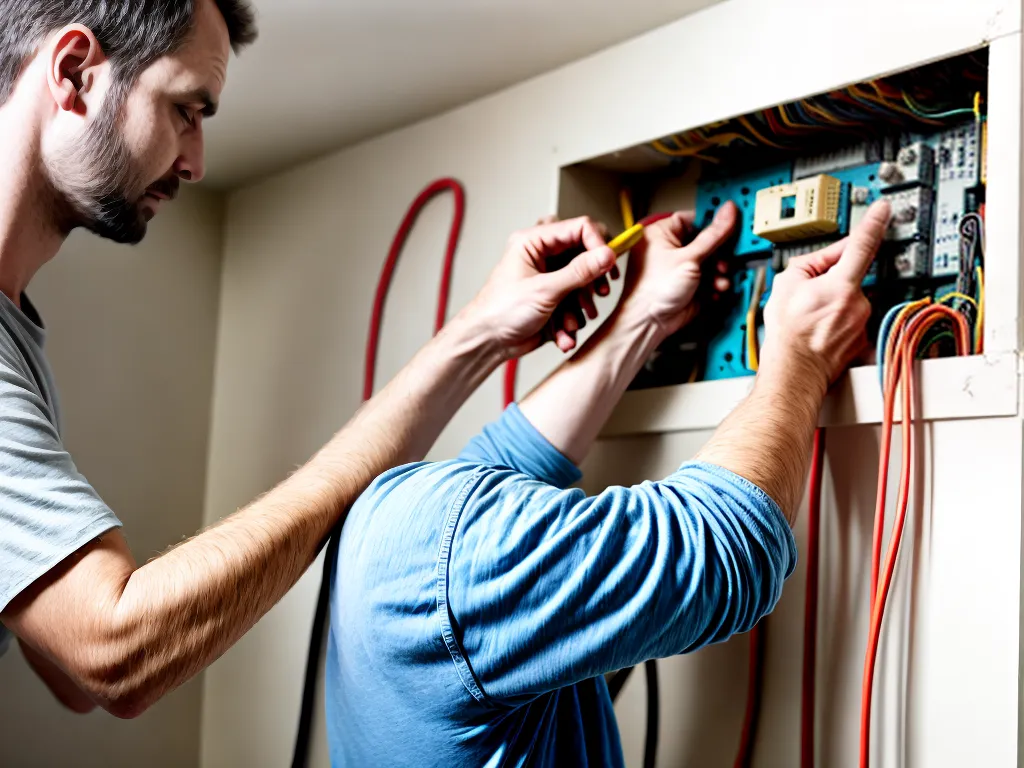
Introduction
Rewiring a home can seem like a daunting task, but with proper planning and precautions it can be done safely without professional assistance. There are a few key things to keep in mind:
Safety First
When dealing with electricity, safety should always be the top priority. Make sure to turn off the main circuit breaker before doing any work. Verify power is off by turning on a light or testing an outlet. Wear protective gear like gloves and eye protection.
Do Your Research
Read up on electrical codes and best practices so you understand proper wiring methods. Consult books, online tutorials, home improvement sites, etc. Knowing the basics will help you avoid hazards.
Work Methodically
Take your time and don't rush the rewiring process. Mistakes can be dangerous. Follow steps carefully and double check your work. Making a wiring diagram first can help organize the project.
Know Your Limits
Rewiring an entire house is complex. Tackle smaller projects first to build skills. If you feel unsure about a task, consider hiring a professional to avoid safety risks. Focus on what you can handle safely as a DIYer.
Preparing to Rewire
Careful planning and preparation will make a DIY rewiring project go smoothly.
Gather Supplies
Make sure you have all the necessary materials before starting. This includes new wires, outlets, junction boxes, conduit, connectors, tools like wire strippers and volt meter, etc. Having everything on hand avoids delays.
Inspect and Plan
Evaluate the existing wiring to see what needs to be replaced. Look for damaged or outdated wires and components. Make a plan for running new wire efficiently through walls and ceilings.
Turn Off Power
The power must be shut off at the main circuit breaker before touching any wires. Ensure it is safely off. Turning off individual breakers is not sufficient.
Remove Old Wiring
Take out the old wiring once the power is confirmed off. This may involve drilling holes to access wiring in walls. Try to minimize damage and debris.
Running New Wires
The key steps for running new electrical wiring in a home are:
Map the Circuit
Diagram each circuit at the service panel, noting what it powers. Duplicate this when adding new wires so everything remains properly connected.
Feed the Wire
Run wires from the service panel to each outlet or fixture along the planned route. Use appropriate wire gauge for the amperage needed.
Secure Wires
Anchor the wiring securely along its path using staples, cable ties, or conduit. Don't let live wires rest loosely inside walls.
Connect Switches and Outlets
Install any switches, outlets, or other components making sure to follow manufacturers instructions. Use proper connectors.
Label Everything
Mark all wires, circuits, junction boxes, outlets, switches, etc so it's clear what they connect to. This helps with safety and future work.
Check Your Work
Inspect all connections, polarity, circuit paths, etc. Verify no shorts are present by testing continuity. Fix any issues before re-energizing.
Final Steps to Finish
You're almost done! Here are the last few steps to wrap up a rewiring project:
Install Walls and Covers
Patch up any holes or damage from installing the new wires. This may involve drywall, plaster, or paneling work. Replace any trim, insulation, or fixtures.
Re-install Breakers
Double check your diagram and reconnect each circuit at the breaker panel. Ensure the amperage matches the gauge of the wiring.
Energize and Test
It's now safe to turn the main power back on. Walk through and test all lights, outlets, and switches. Verify proper operation.
Check for Problems
Look and listen for issues like flickering lights, buzzing, hot outlets, etc. Catching any defects quickly avoids bigger issues down the road.
Finish Touches
Add wall plates, covers, insulation, trim pieces, and anything else to make repairs seamless. Thoroughly clean the work area to finish the project.
FAQs
Is rewiring a home difficult for a beginner?
Rewiring an entire home is complex, especially for someone with minimal electrical experience. Start with smaller projects to build skills. Focus only on what you can handle safely.
What if I open a wall and find dangerous wiring?
Turn off the power immediately. Use caution not to touch exposed live wires. Consider hiring a professional depending on the severity of the hazards found.
Can I upgrade from a 60 amp to 100 amp service panel myself?
Upgrading the main service panel is not advisable for DIYers. This should be handled by a licensed electrician due to the risks involved.
What basic electrical skills should I learn first?
Start by understanding circuit basics, outlet and switch wiring, safety protocols, and how to use a volt meter properly. Take a class or read a book to learn techniques.
Is it okay to leave some old wiring in place?
It's generally best to replace all wiring during a rewire for safety. But as long as old wiring is undamaged and adequate, it can potentially be reused.
Conclusion
Rewiring a house is an ambitious project, but it can be executed safely by a diligent DIYer. The most important aspect is maintaining safety at all times. Do your homework, only take on what you can handle, and don't be afraid to call a professional electrician when needed. With good planning and care, you can take control of updating your home's electrical system. Just be sure to always make safety the top priority.